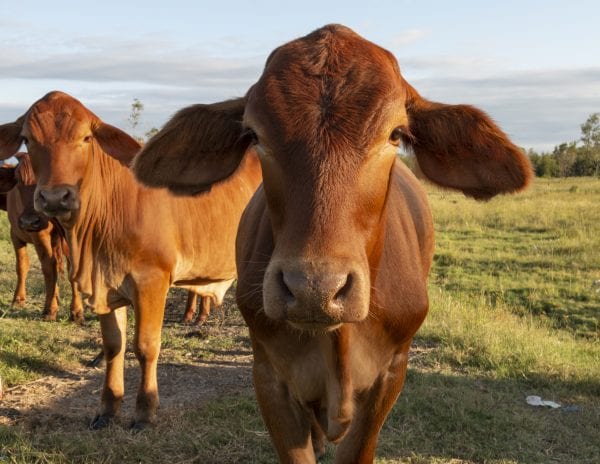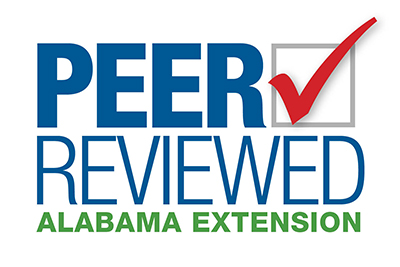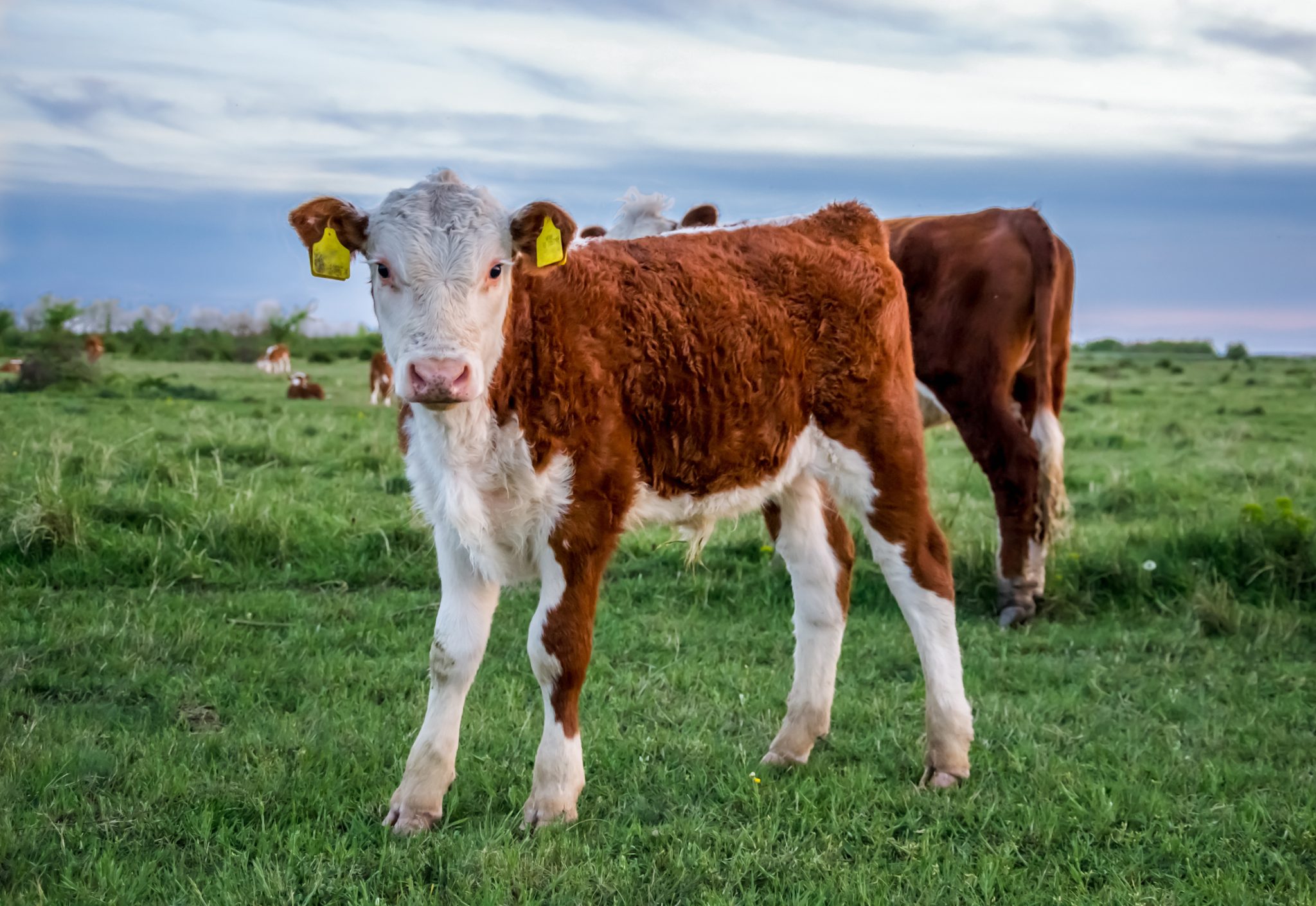Best Way to Raise a Dairy Breed Heifer for a Beef Cattle
Raising beef calves for a successful freezer beefiness program requires specific direction practices. Larn virtually nutritional management, grower and finishing diets, handling facilities and more.
Proper nutritional management is paramount to finishing and harvesting beefiness cattle locally. Other things to consider are adequate cattle treatment facilities, cattle breed differences, and harvest timing considerations. Efficiently raising calves to be finished for harvest requires attention to detail, and if done correctly, should yield a quality stop-product for the consumer.
Nutritional Management
Beef calves should be weaned betwixt 7 and 9 months of age, weighing between 500 and 700 pounds on average. Feed calves mail weaning until they reach a finished weight target of between 1,100 and 1,300 pounds. This weight gain is most easily achieved utilizing available energy-dense grain-based feedstuffs. Quality grain-based feedstuffs will contain a total digestible nutrient (TDN) value ranging from 70 to xc percentage. Add together roughage, such as hay, to this diet to achieve adequate free energy density for each phase of growth. This roughage is needed to maintain rumen health and avert weather condition such every bit acidosis or bloat.
Post weaning, calves will exist fed a grower diet until they reach approximately 800 pounds, followed by a finishing nutrition until harvest. Adding an ionophore to the diet will support increased daily gains. Ionophores are common feed additives that manipulate rumen microbial populations to increase feed efficiency and prevent bloat. An ionophore is often included in many available mixed feeds and mineral supplements, or they may exist purchased and mixed with a given nutrition. Common ionophores include monensin (Rumensin), lasalocid (Bovatec), and laidlomycin (Cattlyst).
Grower Diet
Weaned calves should be fed to gain around 2 pounds per twenty-four hours until reaching approximately 800 pounds. A diet consisting of 60 percentage grain or concentrate and xl pct roughage (hay or grass) and containing threescore to seventy percent TDN and 13 to fourteen per centum crude poly peptide
(CP) provided on an as-fed footing is ideal. Recently weaned calves should exist given a few pounds of the nutrition each twenty-four hours to acclimate to eating from a bunk and transition their rumen onto a grain-based nutrition. Increase the amount of feed past 1 to 2 pounds per head each twenty-four hour period until the calves are eating i.5 to ii.0 percent of total body weight. If possible, feed the allotted corporeality to calves twice a day (one-half the allotted amount in the morn and half in the evening). Cheque feed bunks to ensure that all the feed is being eaten by calves. If there is feed left in the trough following a feeding upshot, subtract the feed corporeality until calves begin to make clean up troughs. If there is no feed left, increase the feed amount accordingly until the calves are eating 1.5 to 2.0 pct of trunk weight. Include a roughage source, such as gratis-choice hay, to ensure that rumen wellness is maintained.
Finishing Diet
Transition feeder calves to a finishing diet afterward they achieve approximately 800 pounds. A finishing diet provides larger calves with an increase in free energy (TDN) allowing for an increase in daily weight gain. A finished steer or heifer is i that is ready for harvest. A finished dogie volition accomplish approximately 0.five inches of dorsum fat, measured between the 12th and thirteenth ribs. This amount of back fat is correlated with the amount of intramuscular fatty (marbling) and is a alive-creature predictor of a dogie's ability to grade choice or above. A dogie must comport significant carcass mass before harvest to produce beef with adequate consistency and taste. Calves should gain 3 or more than pounds per day on a finishing diet. A finishing nutrition will comprise approximately 80 pct grain or concentrate and xx percent roughage with 75 to 85 percent TDN and xiii to 14 percent CP on an as-fed basis. Calves should be eating 2.0 to 2.5 percent of their body weight per day. Again, provide a roughage source such as free-choice hay to maintain gut integrity. The breed and genetic makeup of the dogie will heavily influence the terminal weight of a finished dogie, but the finished market weight volition range from 1,100 to 1,300 pounds.
Cattle Handling Facilities
An adequate working facility is necessary to the success of any cattle operation. A proper working facility allows cattle to be vaccinated and dewormed also equally receive any other animal wellness treatment you lot and your veterinarian deem necessary. A working facility does not need to be elaborate. The basics are a dry out lot to pen cattle and a way to move cattle through a chute to a head catch. The power to accurately measure a calf'due south live weight will permit for more than accurate management decisions during the feeding phases. It will besides assist to decide more accurate estimates of how much beef the dogie volition yield, thus leading to more than profitable marketing decisions.
Confined feeding areas should exist well drained and designed to prevent runoff from contaminating nearby waterways. Concrete pads around water troughs assist in reducing mud. Building mounds that are three to 4 feet high provide a comparatively dry area for calves to escape muddy conditions. Bars feeding areas crave periodic cleaning. Manure should be removed after calves have been sent to harvest and before introducing new calves to the area.
Cattle Brood Differences
Cattle are classified in two species: Bos taurus and Bos indicus. Cattle in the The states are classified as British, Continental, Bos indicus, or American breeds.
British Breeds (Bos Taurus)
British beefiness cattle breeds were adult on the Isles of Great britain. Common British beefiness cattle breeds are Angus, Hereford, and Shorthorn. British breeds tend to be early maturing when compared to Continental beef breeds. Historically, British breeds have been documented to reach market weight more quickly and produce lighter carcass weights. However, British breeds tin exhibit superior marbling, which leads to an increase in product quality and ultimately higher value.
Continental Breeds (Bos Taurus)
Continental beef cattle breeds originated on the mainland of the European continent. These breeds are as well referred to as exotic breeds and include Charolais, Chianina, Gelbvieh, Limousin, and Simmental among others. Continental beef breeds tend to grow faster with increased muscle mass and unremarkably produce leaner carcasses with greater yield grades. Continental beef breeds yield more saleable product, merely on average exhibit less marbling and thus yield carcasses with a lesser quality grade.
 Bos Indicus and American Breeds
Bos Indicus and American Breeds
The Brahman breed is the most common Bos indicus cattle breed in the Usa. The Brahman breed was adult using Bos indicus cattle breeds imported to the Us from India. Bos indicus cattle carcasses exhibit a lesser caste of marbling and have smaller rib middle areas compared to other beef breeds. Nevertheless, in that location is ordinarily no negative impact on carcass quality in cattle that are no more than 50 percent Bos indicus. Extensive crossbreeding programs accept used Brahman influence to develop synthetic cattle breeds, referred to as American breeds, such as Brangus, Braford, Simbrah, Santa Gertrudis, and Beefmaster.
Dairy Beef
Dairy production requires calving yr-round to ensure consistent milk production. The process of raising dairy calves to be harvested is referred to as "dairy beef." Dairy calves are fed milk replacer while being moved to a starter feed and are unremarkably weaned at 5 to 6 weeks of age. Dairy calves can have greater maintenance energy requirements compared to the requirements of beefiness breeds. Dairy calves do require an increased corporeality of feed and days on feed to accomplish a marketplace-finished weight. However, purebred dairy calves express a bang-up degree of marbling but produce a small rib eye.
Crossbreeding Strategies
The goal of crossbreeding is to combine complementary characteristics from dissimilar breeds into one animal. Crossbreeding likewise results in increased hybrid vigor, likewise known as heterosis. Bulls from a given continental breed are often used in last crossbreeding programs. The calf resulting from a terminal cross is intended to be fed and harvested as opposed to existence kept as a replacement female or herd sire. This cross results in calves that grow faster with increased yield grades while maintaining adequate carcass quality. Bos indicus–influenced cattle exhibit greater estrus tolerance and insect resistance compared to Bos taurus breeds. Today'south dairy manufacture relies on "sexed and sorted" semen and has been incorporating beef bulls to produce male person calves. Beefiness bulls with lightweight birth weight expected progeny differences (EPDs) are being used at a greater rate because the male calves will ultimately finish up in the beefiness supply chain. Crossbred dairy calves can grow more efficiently than their purebred counterparts.
Harvest Considerations
Freezer beef production relies on a strong relationship with a local processing facility. Local processing facilities take express capacity, and appointments should be booked several months in accelerate. Information technology is important to place the desired finishing weight and and then feed accordingly. Monitor average daily gain to ensure that animals are achieving that target weight. For example, an 800-pound calf that gains 3.5 pounds per day could exist ready to harvest after feeding between 86 and 143 days. Communicate with your selected processor to decide the optimal delivery fourth dimension for your creature. Reduce feed and forage intake of your animate being up to 12 hours before arrival at the harvest facility. This modification in the feeding regime before harvest will aid in reducing fauna compress and minimize nutrient safety risks from excessive rumen contents.
Download a PDF of Raising Calves for Freezer Beef Production, ANR-2715.

Did you find this helpful?
Source: https://www.aces.edu/blog/topics/beef/raising-calves-for-freezer-beef-production/

0 Response to "Best Way to Raise a Dairy Breed Heifer for a Beef Cattle"
Post a Comment